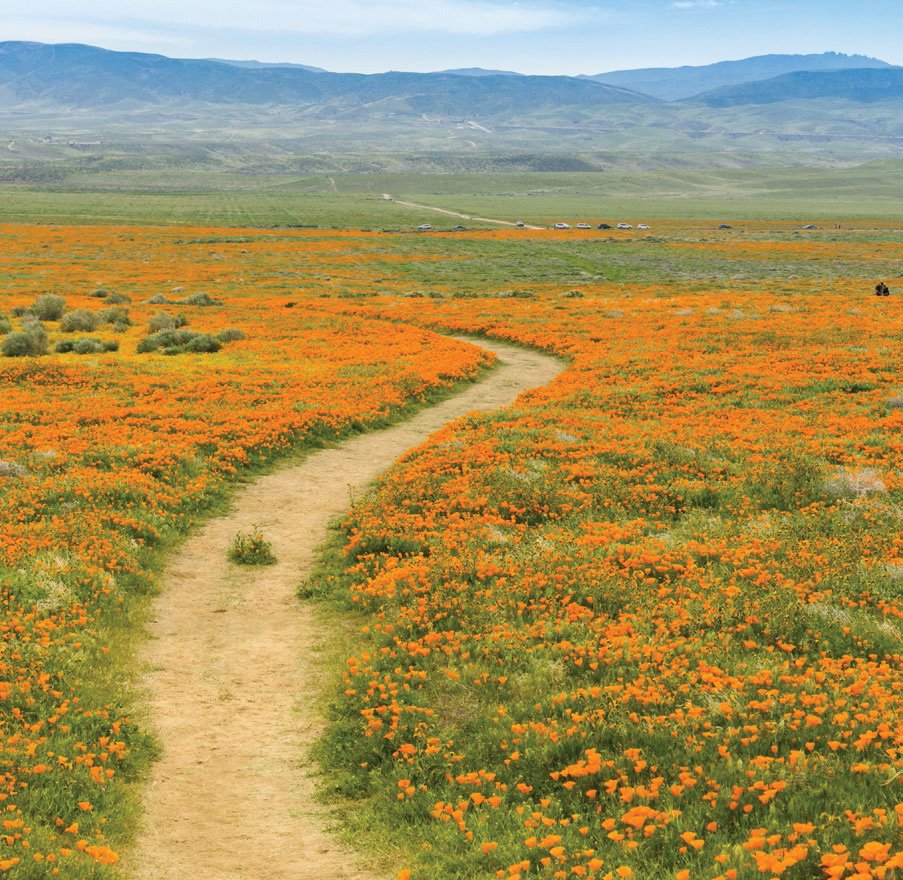Time To Re-Focus
L.A. County takes a data-driven approach to reimagine conservation
By Clement Lau
Photos: Los Angeles County Department of Parks and Recreation
On December 6, 2022, the Los Angeles County Board of Supervisors unanimously adopted the 2022 Parks Needs Assessment Plus (PNA+) Final Report as its 30x30 plan. The goal is to conserve 30 percent of lands and coastal waters by 2030 to address climate change and protect biodiversity. The federal government and various states—including California—have committed to achieving this goal.
Prepared by the Los Angeles County Department of Parks and Recreation (DPR), the PNA+ Final Report focuses on environmental conservation and restoration, regional recreation, and rural recreation. It builds upon and supplements the 2016 Parks Needs Assessment (PNA) with data and mapping regarding environmental conservation and restoration, as well as regional and rural recreation needs. Like the 2016 PNA, the PNA+ involved extensive data collection and analysis, mapping by using a geographic information system (GIS), coordinating with park and trail-managing agencies, and engaging public outreach in partnership with community-based organizations (CBOs).
The report focuses on the most vulnerable residents living in park-poor, tree-poor, urban and rural areas with limited access to local and regional parks and recreational facilities. Vulnerable communities are identified and mapped using data from the Healthy Places Index (HPI), including indicators that address four dimensions:
Social barriers, like poverty and unemployment
Transportation barriers, like limited access to public transit or an automobile
Health vulnerability, like reduced life-expectancy at birth
Environmental vulnerability, like the high number of excessive heat days and limited tree canopy, or lack of “shade equity.”
“Black and brown communities often have the highest environmental burdens, with people of color accounting for 84 percent of the residents living in areas prioritized for restoration. The traditional conservation framework has left these communities out of the policy and funding equation, which makes the stakes higher for advancing climate-resiliency in these communities,” says Norma Edith García-Gonzalez, Director of DPR and the Los Angeles County Regional Parks and Open Space District (RPOSD). “DPR is committed to walking hand-in-hand with our community-based organizations and the Board of Supervisors to advance the PNA+ priorities. The PNA+ is a critical step towards environmental justice.”
Environmental Conservation And Restoration
The report’s strategy is to reimagine conservation through an equity lens to include both traditional efforts that involve the protection of natural lands and the restoration of degraded lands, especially in lower-income communities where vulnerable populations and environmental burdens are concentrated.
Priority areas for environmental conservation are those that offer the most environmental benefits as measured by species diversity, significant habitat, habitat connectivity, proximity to a waterbody, and habitat type. Examples of these areas include portions of the Antelope Valley, Puente-Chino Hills Wildlife Corridor, San Gabriel Mountains, Santa Monica Mountains, and Santa Clarita Valley, which are not currently owned and managed by public agencies and conservancies.
Priority areas for environmental restoration are those that have the most environmental burdens with respect to groundwater threat, hazardous waste, poor air and water quality, and pollution burden. Examples include oil fields (such as the Inglewood Oil Field in Baldwin Hills), brownfields, landfills (such as the Puente Hills Landfill), and other degraded lands that may be converted to parks and open space in the future.
Regional And Rural Recreation
The report also identifies priority areas for regional and rural recreation based on population vulnerability, access to and availability of recreational facilities, and the amenities these facilities offer. Los Angeles County has about one-million acres of parkland, which account for 38 percent of the county’s total land area. There are, however, challenges associated with access to these areas due to their distribution and other factors such as the lack of public-transit service. In particular, parklands account for less than 5 percent of lands in the most urban areas of the county. Also, while rural areas have significant acres of parkland, they are lacking in certain amenities needed for public recreation and climate resiliency, especially water-based recreation facilities such as swimming pools and splash pads, as well as shaded seating, play areas, and walking trails.
“The completion of this report is a milestone for our county because it helps us advance our work to promote health, play, and a sense of community,” says Supervisor Kathryn Barger, who co-authored a motion to approve the final report. “The report’s needs-assessment also highlights that rural communities in particular … need access to more waterparks, walking trails, and play areas. I intend to use this report’s findings as another tool, as I advocate to bring more of those assets to my Fifth District residents. They deserve to have equal access and enjoy healthy-living activities in their communities.”
Community Engagement And Outreach
The PNA+ involved extensive public engagement and outreach, done with the support and assistance of over 20 CBO partners. To keep the public engaged and informed, DPR regularly updated the Parks Needs Assessment website, created accounts on social media (Twitter, Facebook, and Instagram) for the project, and used the latest tools for community engagement to conduct online workshops and surveys. The PNA+ also collaborated with CBOs on outdoor outreach events and distribution of paper surveys. Thousands of residents completed surveys and participated in workshops and other events. DPR also conducted a focused outreach to Native American stakeholders using a tribal-needs survey to collect input from native and indigenous peoples in the county.
Next Steps
Based on its key findings, PNA+ offers various recommendations and next steps that are detailed in the report and organized by the following categories:
Funding priorities
Park, trail, and open-space provision
Collaboration and coordination
Access and information
Community engagement
Capacity-building
DPR is now working at federal, state, and local levels to incorporate this concept into programs, legislation, policies, and funding opportunities. Board adoption of the report is a critical first step to help the county secure funding and other resources.
Clement Lau, DPPD, FAICP, is a Departmental Facilities Planner with the Los Angeles County Department of Parks and Recreation. Reach him at clau@parks.lacounty.gov.



